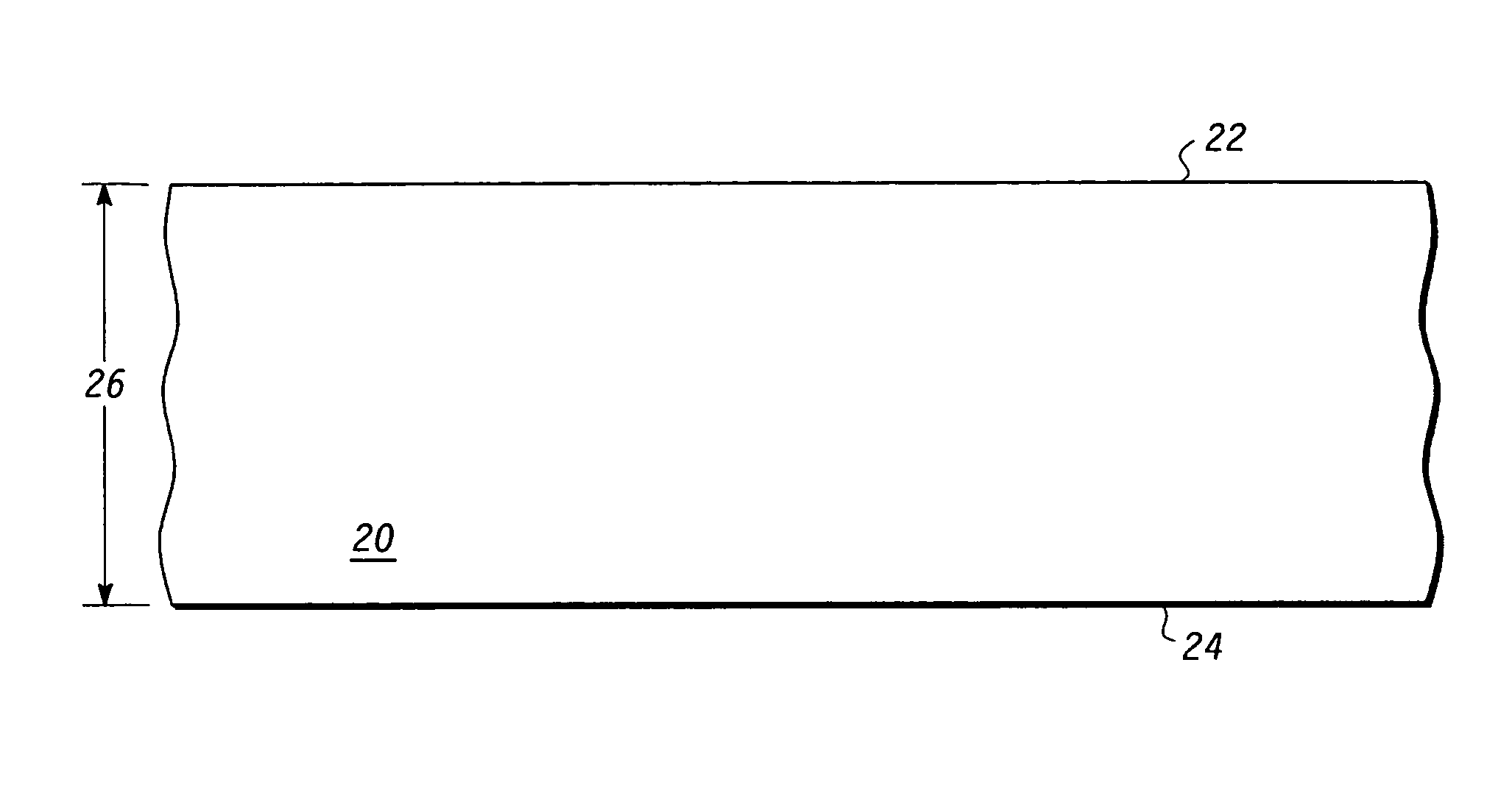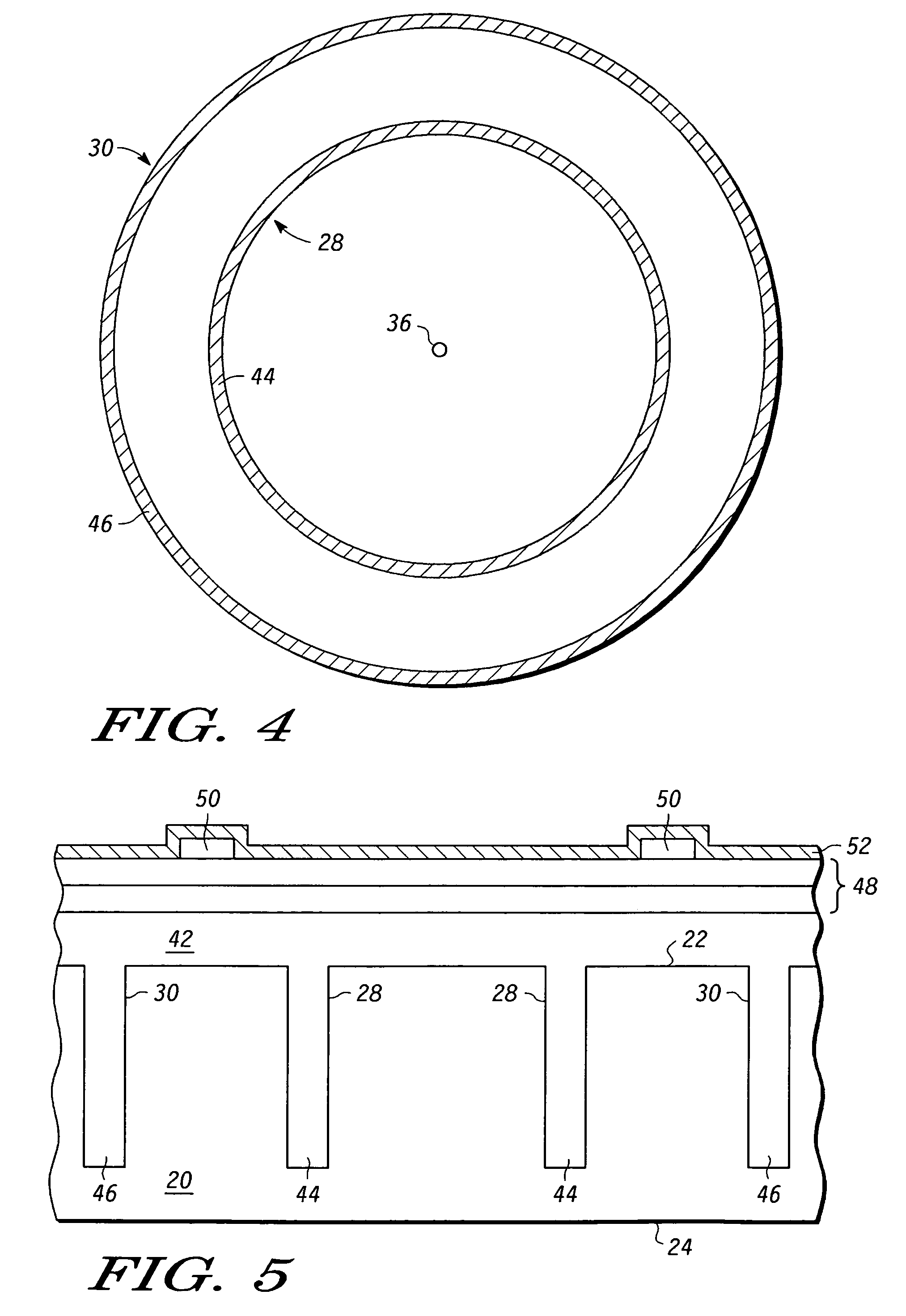Method for forming microelectronic assembly
a microelectronic assembly and microelectronic assembly technology, applied in the direction of basic electric elements, electrical apparatus, semiconductor devices, etc., can solve the problems of affecting the performance of the device, affecting the efficiency of the device, so as to reduce the coupling between the coil and the substrate, reduce the possibility of air cavity contamination during subsequent processing steps, and increase the q factor of the inductor
- Summary
- Abstract
- Description
- Claims
- Application Information
AI Technical Summary
Benefits of technology
Problems solved by technology
Method used
Image
Examples
Embodiment Construction
[0023]The following detailed description is merely exemplary in nature and is not intended to limit the invention or application and uses of the invention. Furthermore, there is no intention to be bound by any expressed or implied theory presented in the preceding technical field, background, brief summary, or the following detailed description. It should also be noted that FIGS. 1-17 are merely illustrative and may not be drawn to scale.
[0024]FIGS. 1-13 illustrate a method for forming a microelectronic assembly including a spiral inductor, according to one embodiment of the present invention. Referring to FIG. 1, there is illustrated a semiconductor substrate 20. The semiconductor substrate 20 is made of a semiconductor material, such as silicon, and includes an upper surface 22 and a lower surface 24. The substrate 20 may have a thickness 26 of approximately 1,000 microns. Although only a portion of the semiconductor substrate 20 is illustrated, it should be understood that the su...
PUM
 Login to View More
Login to View More Abstract
Description
Claims
Application Information
 Login to View More
Login to View More - R&D
- Intellectual Property
- Life Sciences
- Materials
- Tech Scout
- Unparalleled Data Quality
- Higher Quality Content
- 60% Fewer Hallucinations
Browse by: Latest US Patents, China's latest patents, Technical Efficacy Thesaurus, Application Domain, Technology Topic, Popular Technical Reports.
© 2025 PatSnap. All rights reserved.Legal|Privacy policy|Modern Slavery Act Transparency Statement|Sitemap|About US| Contact US: help@patsnap.com



